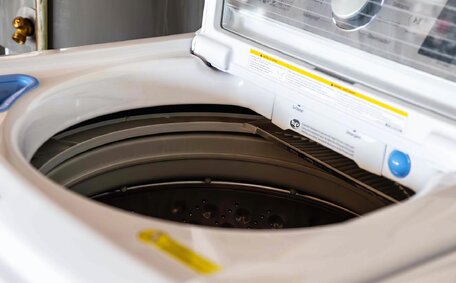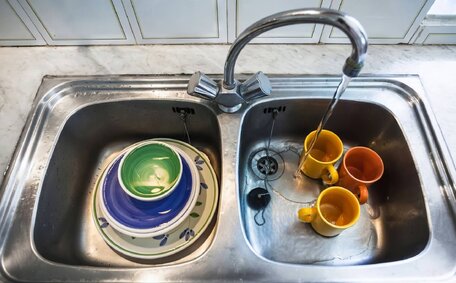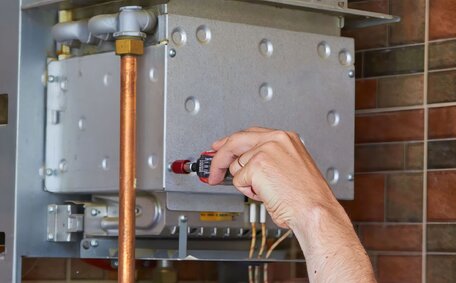Introduction: The Essential Toolkit for Emergency Plumbers
For emergency plumbers, it’s essential to have the right tools to swiftly address and fix urgent plumbing problems. This guide details the essential tools emergency plumbers use, highlighting the non-negotiables for any well-equipped professional toolkit.
Armed with specialised tools, emergency plumbers efficiently tackle diverse problems, including drain blockages and burst pipes, risking the integrity of residential and commercial plumbing systems.
We’ll explore a spectrum of tools, from basic wrenches and cutters to cutting-edge devices such as pipe inspection cameras. You will discover important selection criteria for durable, high-performance tools as we illustrate their uses and applications. By the conclusion, you will understand the diverse toolkit enabling our licensed plumbers at Parramatta Plumbing to handle every form of plumbing crisis.
We’ll also share professional tips for DIYers on choosing the right instruments from your local hardware store for minor repairs.
Plungers: Not Just for Toilets
Plungers are vital and multiuse tools for all emergency plumbers addressing drain obstructions. While often associated with unclogging toilets, there are specialty plungers designed for sinks, tubs, and other specific plumbing needs.
The common cup plunger uses a rubber suction cup to dislodge clogs and is an essential basic plumbing tool that every household should have for efficient plumbing tasks in toilets and drains. Plungers with long handles, offering extended reach for bathroom and kitchen pipes, are a must-have in your toolkit.
To effectively use a toilet auger, fill the sink or bowl with enough water to cover the drain opening completely.
Fully immerse the plunger and exert rapid, forceful pushes to create sufficient suction for breaking up blockages. Evaluate drainage and repeat as needed until water flows freely.
Types of Plungers and Their Uses
There are two main types of plungers that emergency plumbers use frequently - the standard cup plunger and the flange plunger.
Cup Plungers
The cup plunger has a rubber suction cup on the end of a wooden handle. It creates a tight seal and is best for sinks, tubs, and especially toilets. Cup plungers use up-and-down motion to plunge the drain and dislodge clogs.
Flange Plungers
On the other hand, When operated rapidly, the flange plunger generates strong suction to clear stubborn blockages.
Flange plungers work well for bathroom and kitchen sink clogs. For example, the flange plunger, distinguished by its tapered rubber flange, excels over flat cups in clearance efficiency.
Knowing when to use a cup vs. flange plunger allows emergency plumbers to quickly clear drains throughout a home. Proper plunging technique and matching the right plunger to the clogged drain results in superior drain clearing capability.
Drain Augers and Snakes: Going Beyond The Plunge
When plungers fail to clear a severely clogged drain, emergency plumbers rely on drain auger devices, also called drain snakes. These flexible steel cables have a spiral metal tip on one end to grab and dislodge debris lodged deep in pipes.
The process of twirling and guiding the cable lets the snake traverse tenacious clogs, ensuring uninterrupted drainage.
Learn more about safety; always secure any exposed cables before operating a powered drain snake. Guide the rotating tip carefully to avoid damaging pipes. For optimal results, begin unclogging efforts distal to the blockage and steadily work towards it. Knowing how to use water to help flush debris along also improves the effectiveness of plumbing techniques.
Progress incrementally towards the blockage, manipulating the tool with twists and movements until you restore free water flow.
Manual hand augers are effective for regular plumbing issues, but for more intense scenarios like deep root Infiltration, electric models deliver enhanced torque. However, the automated operation requires extra precautions. Carefully follow manufacturer instructions and safety procedures when using any high-powered electric equipment.
Using Augers and Snakes to Clear Clogs
When a plunger is unable to clear a drain clog, emergency plumbers rely on augers and snakes to get the job done. Here is a step-by-step guide for using these tools effectively:
- Stabilise the cable’s end to prevent unwanted spinning during use and position the auger’s spiral tip at the start of the drain.
- Gently feed the snake into the drain, turning the handle clockwise to advance the auger.
- Upon encountering resistance from a clog, twist and nudge the tool forward in short, controlled segments.
- Alternately turn the handle back and forth to navigate through the blockage until the cable advances smoothly.
- Initiate the retrieval of the auger by turning the handle counter-clockwise, drawing it back as water begins to drain.
- After extracting the auger, run hot water to clear any residual debris in the pipes.
- Ensure the tool is thoroughly cleaned and stored correctly after each use.
Adhering to these protocols allows emergency plumbers to safely eliminate deep clogs, while forethought in retrieval secures a smooth cable retraction, avoiding pipe harm or equipment mishaps.
Pipe Wrenches and Adjustable Wrenches: Gripping and Turning
Pipe wrenches and adjustable wrenches are essential tools for emergency plumbers. Pipe wrenches feature adjustable, toothed jaws that grip round pipes and fittings securely without damaging them. This precision allows emergency plumbers to apply significant twisting force, which is vital when dealing with blocked drains to ensure the thread seal of pipe connections during repairs.
A 14-inch pipe wrench is versatile, making it a staple among the essential plumbing tools suitable for confined spaces. Longer versions spanning 18 to 24 inches offer the added leverage necessary for loosening seized parts or handling high torque necessities in commercial scenarios.
A crescent wrench excels in gripping nuts, bolts, and fixtures with precision. Ensuring you have the right tools, a 6-inch and 10-inch adjustable wrench cover most household plumbing jobs. Essential tools like adjustable wrenches with smooth jaws facilitate precise adjustments, ensuring the job can be handled efficiently.
Choosing the Right Wrench for the Job
When selecting wrenches for plumbing tasks, consider the size and shape of the pipes, nuts and bolts you need to grip or turn.
Pipe wrenches work well for rounding piping between 1/8” and 2” diameter. Larger adjustable wrenches provide better leverage on big bolts or valves over 2”. Pipe wrenches work well for rounding piping between 1/8” and 2” diameter.
The configuration and design of jaw teeth impact the wrench’s grip and torque. Should there be irregular noise from pipes, this indicates inconsistent jaw contact. Switch to a larger wrench or use shims to improve fit and reduce slippage and damage.
Construction material matters too. Chrome plated or alloy steel wrenches withstand corrosion better for long term use. Choosing an appropriate wrench, though straightforward in theory, demands expertise and knowledge to best suit the task at hand.
Basin Wrenches: Accessing Tight Spaces
Basin wrenches are specialised plumbing tools used to access and service fixtures in confined areas. These wrenches have a long, angled neck that allows the jaws to reach up and behind basins, toilets, and pipes in cramped spaces.
The pivoting head, situated just below the tool’s neck, empowers plumbers to secure nuts, bolts, and fittings in hard-to-reach areas, moving beyond the capability of standard wrenches. Common applications include tightening or removing supply lines, p-traps, or sink mounts tucked high under bathroom and kitchen sinks.
A quality basin wrench typically features corrosion-resistant construction, adjustable jaws to safeguard fixtures, and a spring-loaded neck for effortless positioning. Selecting a basin wrench with the appropriate reach and jaw capacity enables emergency plumbers to efficiently undertake repairs in tight spaces.
Using Proper Technique with Basin Wrenches
Skillful application of basin wrenches helps emergency plumbers execute effective repairs while maintaining the integrity of the fixtures. Here are key techniques to enhance your DIY plumbing efforts:
- Select the correct jaw capacity and reach before extending behind basins or toilets, because having tools can make all the difference.
- Grip bolt heads securely in the adjustable jaws, tightening the thumbscrew to hold firmly.
- Carefully engage the spring-loaded neck and pivot the head into position.
- Use moderate, steady force when turning basin wrench handles to avoid stripping bolts.
- Support fixtures with one hand while using basin wrench with the other.
- Loosen seized connections with penetrating oil before attempting removal.
Exerting measured force and securing fixtures help prevent slippage and potential cracking. Effective basin wrench methods allow plumbers to quickly address leaks in constrained spaces.
Hacksaws and Tubing Cutters: Precision Pipe Cutting
Possessing the right tools for exact pipe cutting is crucial during plumbing emergencies. Hacksaws and pipe cutters are vital tools used plumbing teams depend on to accurately sever copper, plastic or metal pipes to length when making repairs or installing new lines.
A hacksaw features a fine-toothed metal blade ideal for cutting through different materials, similar to the kind used when a wrench is tensioned in a frame. Toolbox staples like tubing cutters and hacksaws enable plumbers to precisely measure and cut pipes, ensuring custom fitments. High-quality blades that efficiently slice through metal and plastic are essential for clean cuts.
Cutting Tips and Safety
For more information on use, emergency plumbers can also follow these safety tips for clean, precise cuts when using hacksaws or tubing cutters during plumbing repairs:
- Secure pipes before cutting to mitigate movement.
- Utilise keen-edged blades appropriate for various pipes and maintain correct tension for eased cutting.
- Brace the end of the pipe to control its drop post-cutting.
- For hacksaws, keep strokes straight with moderate pressure
- Lubricate cutters with oil/soap for smooth cuts in plastic pipes
- Deburr cut ends with a metal file to remove sharp edges
- Wear gloves to protect your hands from blade contact or hot pipes
Applying controlled force with stabilised pipes prevents slippage and damage. Following safety procedures also ensures emergency plumbers avoid blade injuries for efficient, incident-free repairs.
Pliers: The Multi-Purpose Gripping Tool
Pliers, a key multi-purpose hand tool, are crucial for various plumbing repairs and relied upon by emergency plumbers. There are many types of pliers, each with specialised functions for gripping, twisting, cutting and bending metal, plastic and other materials during repairs.
Essential pliers for any emergency toolkit include:
- Groove pliers, ideal for loosening tightening pipes, nuts and fittings, also known as Channellock, feature adjustable jaws. Useful for loosening seized parts.
- Water pump pliers, a wrench designed to grip pipes securely to dislodge stuck fittings or apply torque for removal.
- Linesman’s pliers: Allows emergency plumbers to firmly grip wires, cut bolts and bend or cut metal rods as needed.
Select pliers forged from alloy steel to guarantee longevity even with rigorous daily use. Opt for styles with comfortable grips and capacities suited for typical residential plumbing parts. Taking time to select the right specialty pliers helps emergency plumbers efficiently complete a wide range of repair tasks during urgent call-outs.
Types of Pliers and When to Use Them
Emergency plumbers rely on several types of pliers, each suited for specific applications:
Tongue-and-Groove Pliers
Tongue-and-groove pliers, with their adjustable jaws and ribbed teeth, offer a strong hold, essential for freeing jammed connections.
Water Pump Pliers
Channeling lock pliers, water pump pliers firmly grip rounded surfaces, enabling emergency plumbers to exert substantial torque, which is particularly useful for stuck connections.
Linesman’s Pliers
With both flat and serrated jaws, linesman pliers assist with firmly grasping wires when splicing as well as gripping and cutting bolts or small pipes as needed.
Selecting the right style of pliers ensures plumbers can tackle any job, even with challenging stuck or tight connections.
Plumber’s Tape: Preventing Leaks
Plumber’s tape, also known as PTFE or Teflon tape, is an essential tool for emergency plumbers to prevent leaks. This thin, white tape wraps around threaded pipe connections to create a tighter seal.
Applying PTFE tape is a fundamental step when installing or replacing fixtures and valves, an essential technique for any plumber. By filling in tiny grooves in the threads of plumbing fixtures, the tape prevents water from seeping through small gaps. Furthermore, its non-stick properties facilitate effortless tightening of pipe joints.
To employ plumber’s tape, wrap it tautly and evenly two to three times clockwise around the male threaded fitting. The plumber’s tape also use its property of creating seal by compressing when screwed into the female fitting to ensure a water-tight connection.
Re-tape worn fittings to restore sealing performance.
Regular employment of plumber’s tape guarantees robust seals and averts leaks in the plumbing system. Keeping it well-stocked ensures readiness to tackle installations, repairs, and replacements for residential and commercial clients.
Using Plumber’s Tape Properly
Using plumber’s tape properly ensures water-tight seals on pipe connections. Follow these key steps:
- Clean threads thoroughly to remove dirt and old tape residue
- Wrap tape clockwise 2-3 times around the male pipe thread
- Keep first thread exposed and pull tape tight as you wrap
- Screw pipe into fitting, compressing tape to fill voids
- Add additional wraps if needed to stop leaks
Maintain balanced pressure while fastening to prevent tape tear. Tape can deteriorate, leading to loosening over time; hence, it’s advisable to replace it annually on fixtures. The correct use of plumber’s tape is essential for leak-free, dependable pipe connections.
When to Call a Professional Plumber
It’s important for homeowners to recognise when a plumbing issue requires professional intervention rather than a DIY approach. Certain situations clearly indicate it’s time to engage the services of a skilled plumber:
- Major leaks causing extensive water damage during plumbing work
- Complete drain blockages unaffected by drain snaking
- No hot water due to complex heating system issues
- Backed up sewer lines and septic tank problems
- Whole-home pipe corrosion requiring re-piping
- Gas leaks suspected on lines or appliances
Our Parramatta Plumbing team, comprised of licensed professionals, possesses the advanced tools, expertise, and experience required to address common plumbing emergencies, including leaks. Whether it’s a stubborn clog in shower drains or complex water heater repair, we’re available 24/7 to assist. Call us at 1300 349 338 or book an urgent appointment to resolve your critical plumbing issues.






